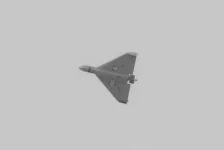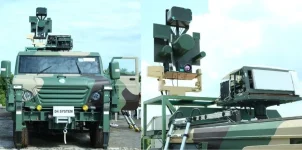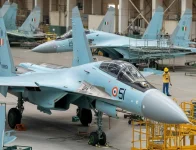- Views: 1K
- Replies: 1
Recent reports suggest the Pakistan Air Force (PAF) experienced a major setback due to a flawed strategy in a recent attempted air operation.
The PAF's plan, which relied on using large numbers of coordinated drones – a tactic known as drone swarming – to overwhelm Indian air defences, was intended to create brief weaknesses in India's comprehensive air defence system.
Instead of succeeding, the mission highlighted an apparent misjudgment of India's multi-layered air defence capabilities and led to significant losses for the PAF's ability to conduct strikes.
The core of the unsuccessful Pakistani operation was based on the idea that deploying many inexpensive drones, possibly for distraction or information gathering, could overload India's air defence systems.
The PAF may have hoped this would compel Indian forces to use up their interceptor missiles and radar capacity. Theoretically, such a situation might have momentarily impaired the Indian Air Force and Army's air defence units, thereby opening up opportunities for PAF manned fighter jets and other aircraft to launch their missiles and bombs.
During the ensuing confusion, PAF combat aircraft reportedly tried to quickly gain height from a low-flying approach, launch their weapons, and then withdraw rapidly to avoid being targeted—a common tactic known as 'shoot-and-scoot'.
However, this strategy was met with India's sophisticated, multi-layered air defence network. This system, known as the Integrated Air Command and Control System (IACCS), which digitally connects various defence components including radars, sensors, and weapon systems, effectively managed the combined threat from drones and aircraft.
India's air defence network was not overwhelmed; instead, it performed as designed. Army Air Defence units effectively countered most of the drone swarms using both direct missile strikes (kinetic measures) and electronic interference (electronic warfare).
Short Range Air Defence systems (SHORADs), such as the domestically developed Akash and the Spyder missile systems, along with shoulder-fired missiles known as MANPADS (Man-Portable Air-Defence Systems), successfully neutralized numerous drones before they could endanger important locations.
The strength of the IACCS lies in its layered design, which combines information from various sources like airborne early warning aircraft (which can detect threats from long distances), ground-based radar stations, and satellites.
This integrated approach ensured that even low-flying enemy aircraft and incoming guided missiles were rapidly identified and followed. Coordinated efforts between the Indian Air Force and Army Air Defence allowed for the swift assignment of targets for interception.
The PAF aircraft involved in the strike, which likely included JF-17 and modified Mirage fighter jets, were met with strong resistance from Indian fighter aircraft patrols and ground-launched anti-aircraft missiles. Reports indicate that some Pakistani aircraft were unable to even launch their weapons.
The small number of guided missiles and bombs that were fired were either destroyed in flight or resulted in little damage, partly because potential targets were well-protected and important resources had been moved beforehand as a precaution.
Furthermore, the PAF's effort to coordinate drone swarms with attacks by manned aircraft suggests a willingness to take risks that may not align with the actual operational environment.
Given that Indian airspace is under constant surveillance by advanced airborne warning systems like the indigenous Netra and Israeli-developed Phalcon, supported by a comprehensive network of ground-based radars, such a high-risk strategy was likely to fail.
This unsuccessful operation is more than a simple failure; it serves as a strong message of India's defensive strength. India's air defence system has demonstrated its capability to effectively and quickly counter complicated attacks involving multiple types of threats.
For the PAF, the loss of aircraft and weapons, along with the inability to make any significant impact, is likely to affect morale and may lead to a re-evaluation of their military tactics and strategies.
For India, this event highlights the chance to further improve cooperation between civilian and military authorities in real-time using the IACCS framework, and to continue reinforcing the protection of sensitive locations.
It also underscores the importance of investing in domestically produced air defence systems, such as the next-generation Akash-NG missile, and in technologies designed to counter drones, which were crucial in this reported engagement.



